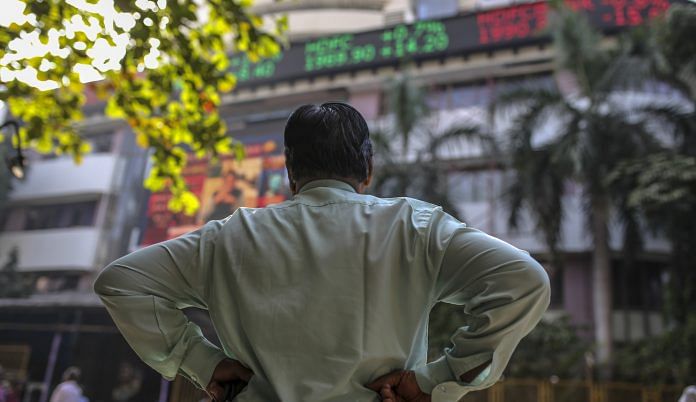Mom-and-pop investors have kept the gloom from worsening.
Mumbai: India’s $2 trillion stock market has been rattled in recent months by everything from high oil prices and tariff threats to a slumping rupee and a sell-off in non-bank lenders. The one thing that’s kept the gloom from worsening: robust flows from mom-and-pop investors.
That backstop is seen extending into 2019 after the bull market over the past five years helped ingrain a buy-the-dip mentality among locals. Consider this: equity funds bought a record 1.18 trillion rupees ($17 billion) of shares this year, negating sales of $4.5 billion by foreigners.
“In previous market corrections, investors would resort to panic selling, but this time they are using it as an opportunity to buy on dips,” said Kaustubh Belapurkar, director manager – research at Morningstar Investment Adviser India Pvt. “This is a trend that will continue, with investors continuing to stay invested despite volatile markets.”
India’s equity culture got a leg-up after Prime Minister Narendra Modi was elected in 2014, as investors embraced mutual funds amid poor returns from gold and property. Stock plans account for 42 per cent of the 24-trillion rupee industry assets, double the level four years ago. There’s room for more: equities form about a fifth of savers’ wealth in India, versus 31 per cent globally, according to Karvy Private Wealth.
“Investors have continued to invest systematically till this point and we hope it continues just like it did through 401(K) in the US,” said Sankaran Naren, who oversees 3.1 trillion rupees at ICICI Prudential Asset Management Co., India’s biggest fund. “Almost 90 per cent of our equity money is from retail.”
Sticky Flows
Equity funds take in 80 billion rupees a month from savers who put in sums regularly, aiming to smooth out swings through averaging. The contributions have risen from about 12 billion rupees in 2014, and have buffered the market against global shocks, according to the Association of Mutual Funds in India.
While money managers are hoping the flows persists, their stickiness will be tested in the months ahead as global markets brace for more volatility from the ongoing trade tensions and political uncertainty grips local investors with general elections to be held by May.
“Increased awareness did bring more investors to mutual funds this year, but the test of their maturity will be in them staying for longer and adding new money, especially in an election year,” said Vidya Bala, head of mutual fund research at FundsIndia.
Insights
Retail accounts in mutual funds reached a record 80 million at the end of October, with three-quarters of them in stock plans, industry data show. Individual investors’ share of total assets rose to 54 per cent in November. Influx aided by policy changes, including the currency ban in 2016, which hurt returns from property and gold, and an ongoing awareness campaign by the industry.
Other Takeaways
Flows to financial assets grew 17 per cent in the year ended March, versus 9 per cent in physical assets, according to Karvy Private Wealth.Allocation to direct equity rose 30 per cent, and mutual funds by 35 per cent in the period. In comparison, bank deposits posted a single-digit growth rate. Financial assets are likely to grow at a compounded annual growth rate of 17 per cent over the next five years, faster than the 9.3 per cent pace for hard assets: Karvy.
Market Action
India’s benchmark S&P BSE Sensex gauge has risen about 7 per cent this year in local-currency terms. That’s as the MSCI Emerging Markets Index has tumbled 17 per cent. The Sensex rose to a record in August only to fall to a six-month low in October as a rare debt default sparked a selloff in non-bank lenders.- Bloomberg



